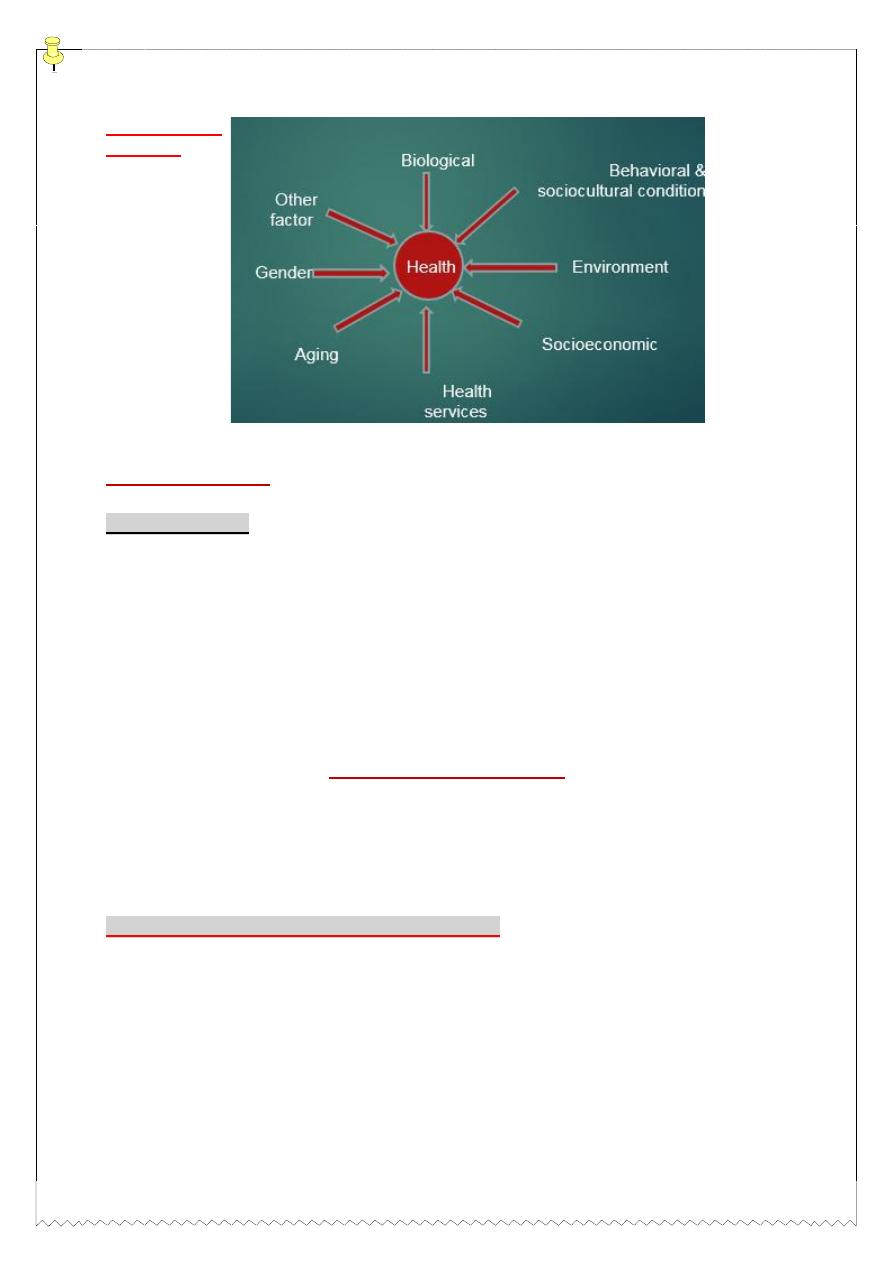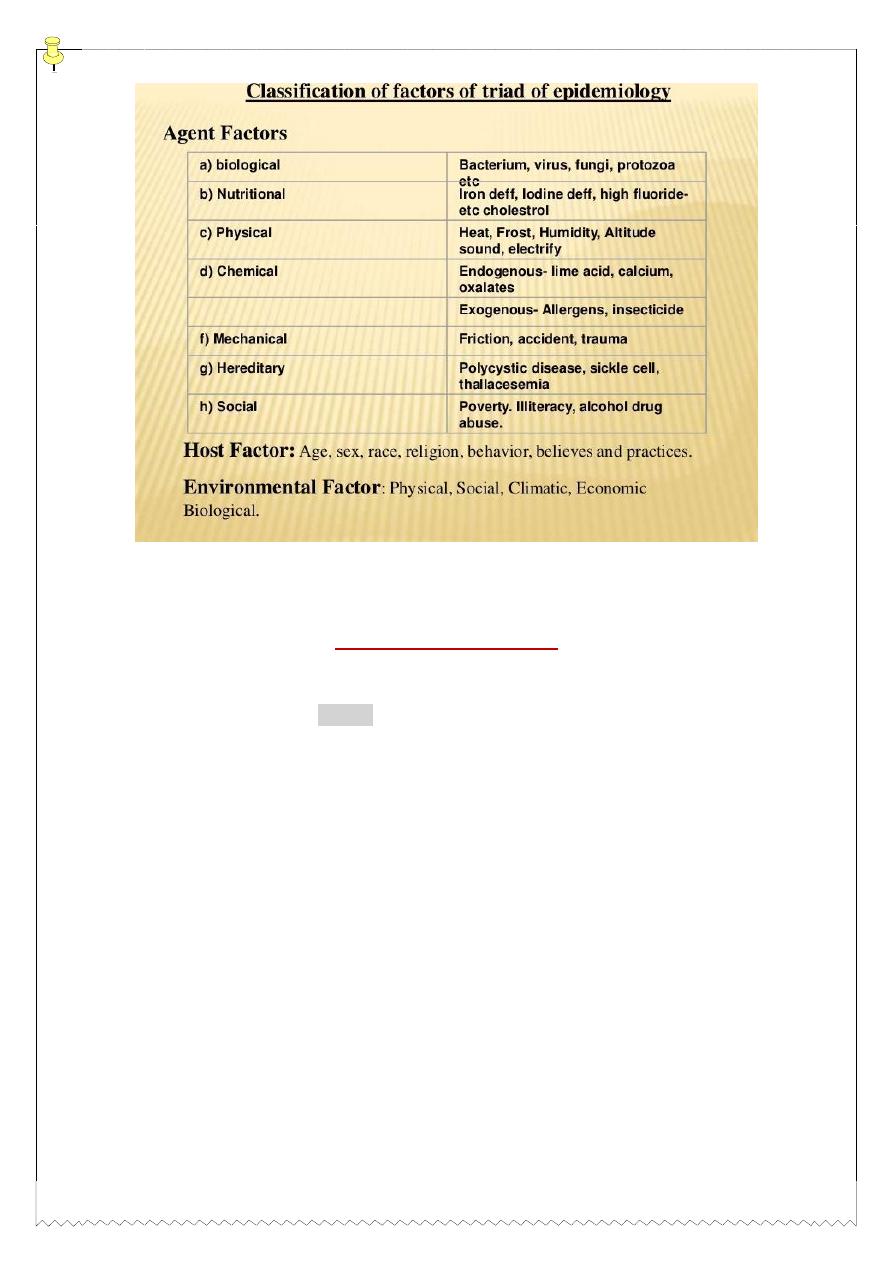
1
Health
: is the absence of diseases
What are the concept of health? (Changing concept of health).
1-
biomedical concept
|absent of disease , body is a machine and the disease is an outcome
of the breakdown of that machine | .
2-
ecological concept
, dynamic equilibrium between man and his environment.
3-
psychosocial concept
, advances in social science showed that health is not only a
biomedical phenomenon but one is influenced by social, psychological, cultural,economic
and political factors of the people concerned so health is both a biological and social
phenomenon.
4-
holistic concept
, recognizes the strength of social, economic, political and environment
influences on health .
What are the
spectrum of health?
1- Positive life 2- better health 3- freedom from sickness 4- unrecognized sickness
5- mild sickness 6- severe sickness 7- death
*Health is a state of complete physical, mental and social wellbeing and not
merely an absence of disease or infirmity
. (1948)
The ability to lead a socially and economically productive life.
(1984)
ملخص
المحاضرة االولى للدكتورة مها

2
Determinants
of health
الصورة
Concept of disease
Disease process is :
1- illness : is a subject state of a person who feels aware of not being well with evident sign
and symptoms.
2- sickness : is a state of social dysfunction.
3- disease : is maladjustment (physiological) of the human being to environment.
Natural history
of disease:
Natural history
of disease refers to the progress of a disease process in an individual over
time, in the absence of intervention.
The process begins with
exposure
to or accumulation of factors capable of causing disease
Without medical intervention, the process ends with
1- recovery
2- Disability.
3- death.

3
Concept of prevention
Concept of prevention
: is always better cure, as per the natural of history disease
epidemiology has derived to 4 levels of prevention disease .
1- primordial prevention :
prevention of the emergence or development of risk
factors and for chronic disease
For example many health adult health problems (e.g., obesity, hypertension)
have their early origins in childhood, because this is the time when lifestyles
are formed (smoking, eating patterns, physical exercise).
Efforts are directed towards discouraging children from adopting harmful
lifestyles .
The main intervention is through individual and mass education.
2-
primary prevention
:
Measures of prevention undertaken during the phase of pre-
pathogenesis (phase of susceptibility)

4
Involves two sub-steps: A- Health promotion and B- specific protection
Health Promotion : Steps undertaken to improve the level of general health and
well being so that conditions for initiation of disease process are prevented.
These steps are not specific for any disease or a group of diseases.
It includes
1- improvement in the overall socio-economic status of the population,
2- health education
3- feeding programmes for mothers and children,
4- promotion of breast feeding,
5- promotion of small family norms,
6- education
7- motivation for healthy lifestyle.
Specific Protection :
include measures to prevent the initiation of specific diseases or a group of diseases.
For Examples
- Immunization to protect against specific diseases
- Fortification of foods with specific nutrients (as salt with iodine)
- Use of condoms to protect against sexually transmitted diseases (STDs)
- Use of helmets to protect against head injuries
3- secondary prevention
These include all actions undertaken at the stage of early pathogenesis (asymptomatic
disease) with a view to halt the progress of disease at it’s earliest, incipient stage, by “early
diagnosis and prompt treatment”.
classical example is “screening for disease” for breast cancer (using mammography) and
cervical cancer (using pap smear).
medical examinations of school children, of industrial workers and various disease screening
camps.

5
4- Tertiary prevention :
These include all measures undertaken when the disease has become clinically manifest or
advanced, with a view to prevent or delay death, reduce or limit the impairments and
disabilities, minimize suffering and to promote the subject’s adjustment to irremediable
conditions.
Tertiary prevention has two types of approaches :
1- disability limitation : These include all measures to prevent the occurrence of further
complications, impairments, disabilities and handicaps or even death
2- rehabilitation (being well ) :
stands for the combined and coordinated usage of all the available
medical, social, educational and vocational measures, for training the person to the highest level of
functional ability.
The sequence with which a disease turns into a handicap is as follows :
Disease :
This is a pathological process and it’s manifestations which indicate a departure
from the state of perfect health.
Impairment :
This is the actual loss or damage of a part of body anatomy or an aberration
of the physiological functions that occurs consequent to a disease.
Disability :
This is defined as the inability to carry out certain functions or activities which
are otherwise expected for that age / sex, as a result of the impairment.
Handicap :
This is the final disadvantage in life which occurs consequent to an impairment
or disability, which limits the fulfillment of the role a person is required to play in life.

